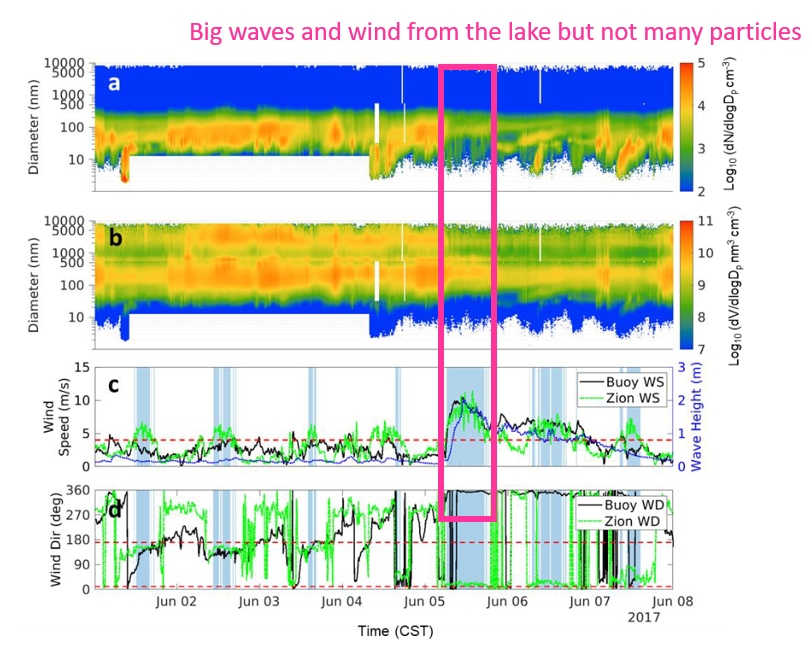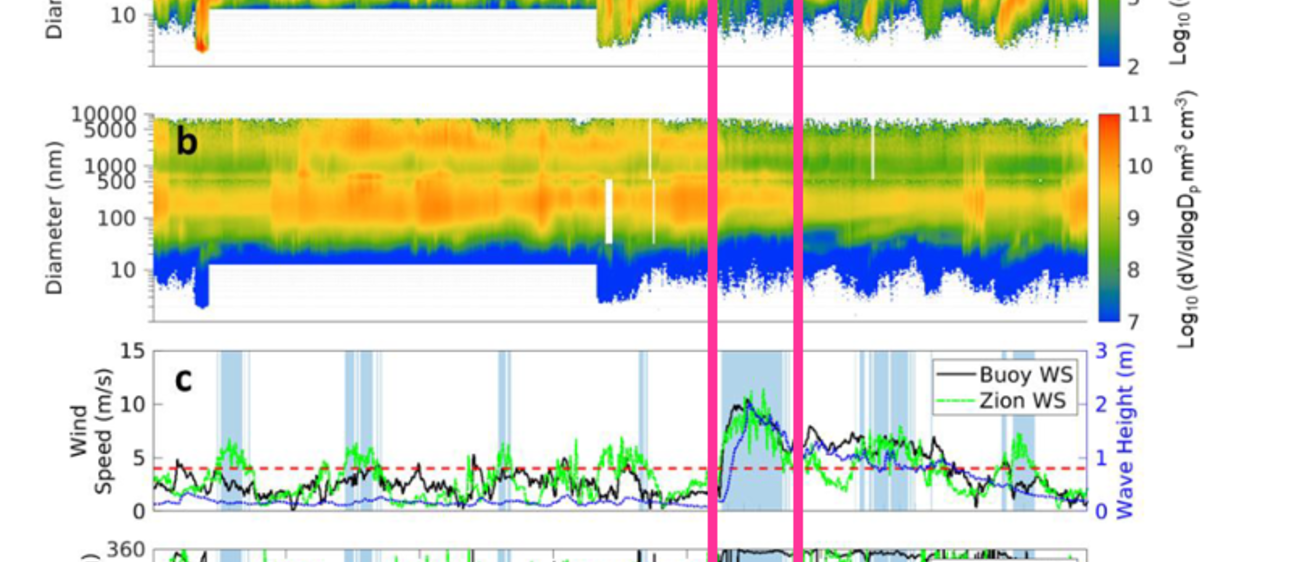Megan Christiansen and other LMOS Team member's latest is out at Eartharxiv.org preprint server while it is under peer-review.
https://doi.org/10.31223/X5J65B
Size Resolved Aerosol Characterization and In-field Comparative Evaluation of TSI 1nm SMPS at Lake Michigan Coastal Station, by Megan B. Christiansen, Charles O. Stanier, Dagen D. Hughes, Elizabeth A. Stone, R. Bradley Pierce, and Sherrie Elzey

ABSTRACT: The atmospheric particle size distribution was measured at a rural lakeshore site (Zion, IL 42.468 N, 87.810 W) during the Lake Michigan Ozone Study (LMOS 2017) in May and June 2017. The full aerosol size distribution was continuously measured by two scanning mobility particle sizers and an aerodynamic particle sizer in the range of 1.02 to 8671 nm (electrical mobility diameter). The Zion site, 0.5 km from the lake, was one of two enhanced monitoring ground stations with collocated meteorology, remote sensing platforms, gravimetric filters, and gas-phase variables. Quantified size distributions of aerosols are important for understanding aerosol climate and health effects, for evaluation of models, and for understanding aerosol sources. Few studies have provided continuous, highly time-resolved, full particle size distribution near the shore of Lake Michigan, and none prior to this have extended measurements into the 1-3 nm size range. There were 14 identified ultrafine burst events, defined as particle growth from sub 10 nm to 25-100 nm, and all events began in the morning hours. Lake spray aerosol was investigated on June 5 when wave breaking conditions were sustained over the lake. The number distribution mode was 81 nm during the event; however, the amplitude of the particle size distribution dropped from 9000 cm-3 prior to the onset to 3000 cm-3 during and post event. Additional wind speed and direction analysis resulted in no identifiable pattern in the ultrafine particles when wind velocity exceed 4 m/s. Other measurement highlights include the mean number concentrations for 1-3 nm and 3-8761 nm were 1.80x104 cm-3 and 7998 cm-3 respectively, aerosol optical depth (0.084), reconstructed PM2.5 (6.4 μg m-3), reconstructed PM10 (7.9 μg m-3) and SO2 (0.32 ppb). Implications for future air quality management are also discussed.
